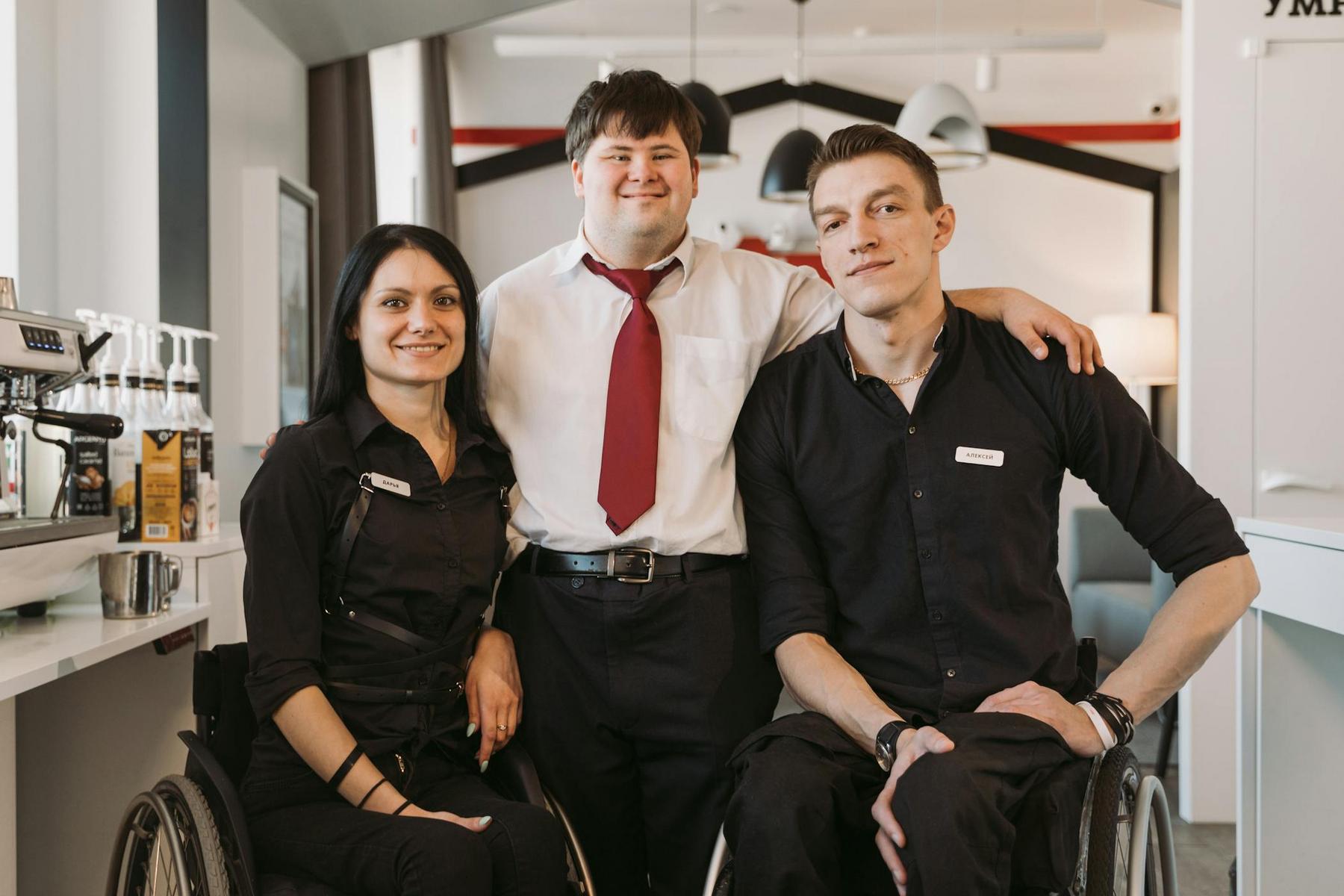Your NDIS planning meeting could be the most important conversation you have this year. For Brisbane residents navigating the National Disability Insurance Scheme, this single discussion with NDIA representatives determines your funding allocation, support services, and ultimately, your quality of life for the next twelve months. Yet many participants walk into these meetings unprepared, missing critical opportunities to secure the supports they genuinely need. The stakes couldn’t be higher—your independence, community participation, and personal goals all hang in the balance during this pivotal conversation.
Brisbane’s NDIS landscape presents unique opportunities and challenges that require localised knowledge and strategic preparation. With three dedicated NDIA offices serving the greater metropolitan area and specialised support networks including Local Area Coordinators through Carers Queensland, Brisbane residents have access to comprehensive resources—but only if they know how to navigate them effectively.
Where Can You Access Brisbane NDIS Planning Meetings and Support Services?
Brisbane’s NDIS infrastructure centres on three strategically positioned NDIA offices, each designed to serve specific geographic areas whilst maintaining consistent service standards across the metropolitan region. Understanding these locations and their specialisations can significantly impact your planning meeting experience and ongoing support access.
Chermside NDIA Office operates from 960 Gympie Road, directly opposite the Tax Office building, serving northern Brisbane suburbs including North Lakes, Redcliffe, and surrounding communities. This office provides comprehensive planning services during standard business hours from 9am to 5pm, with staff available for walk-in consultations and scheduled planning meetings. The Chermside location offers convenient public transport access and ample parking, making it particularly suitable for participants with mobility considerations.
Oxley NDIA Office functions from Level 1 of The Station Oxley at 133 Oxley Station Road, representing a collaborative service model through co-location with the Department of Communities, Disability Services and Seniors. This strategic partnership enables participants to access multiple government services within a single location, streamlining administrative processes for families managing complex support needs. The Oxley office serves western Brisbane suburbs and provides specialised support for participants transitioning between different government service systems.
Mount Gravatt NDIA Office operates from Level 2 at 57 Sanders Street in Upper Mount Gravatt, currently housed above the local Centrelink office whilst permanent facilities undergo refurbishment. This location serves southern Brisbane corridors including Logan, Eight Mile Plains, and surrounding suburbs, ensuring geographic barriers don’t impede access to essential planning services.
All three Brisbane NDIA offices welcome walk-in participants during business hours, reflecting the agency’s commitment to accessibility and responsive service delivery. This open-door policy acknowledges that disability support needs can be unpredictable and that participants may require immediate assistance with urgent planning matters.
Local Area Coordinators through Carers Queensland provide additional support from offices strategically located across North Lakes, Lutwyche, Capalaba, Eight Mile Plains, Logan Central, and Ipswich. These coordinators offer essential pre-planning support, helping participants understand the NDIS system and prepare effectively for their crucial planning meetings.
What Should You Prepare Before Your Brisbane NDIS Planning Meeting?
Preparation quality directly correlates with planning meeting outcomes, yet many Brisbane participants underestimate the strategic preparation required for optimal results. Effective preparation involves systematic organisation of personal information, support documentation, goal articulation, and strategic thinking about current and future needs.
Documentation preparation forms the foundation of successful Brisbane NDIS planning meetings. Essential documents include your NDIS Access Decision letter, existing support plans from other agencies, medical reports and assessments, therapy recommendations, equipment prescriptions, and evidence of current support costs and effectiveness. This documentation serves multiple purposes: providing planners with objective evidence of support needs whilst demonstrating your engagement with appropriate services and commitment to achieving independence.
Goal development represents a crucial preparation component requiring strategic thinking about short-term and long-term aspirations whilst connecting these goals to specific support requirements. Effective goal setting involves identifying what you want to achieve, why these goals are personally meaningful, and how specific supports can facilitate goal attainment. Brisbane participants should consider goals related to community participation, employment or education advancement, independent living skills development, health and wellbeing maintenance, and skill acquisition that enhances capacity for self-directed living.
Current support evaluation requires comprehensive analysis of what works well, what gaps exist, and what changes might improve outcomes. This analysis should consider both formal paid supports and informal assistance from family, friends, and community networks, as planners need complete pictures of participants’ total support environments. Be prepared to discuss how your life would change if current supports were withdrawn—this information helps planners understand the critical nature of various support components.
The “Mapping My World” resource provides structured frameworks for Brisbane participants to document their circumstances, challenges, and aspirations before engaging with planners. This preparation tool enables you to organise thoughts, identify key discussion points, and ensure critical information isn’t overlooked during the meeting process.
Practical meeting considerations include decisions about meeting format preferences, location choices, support person involvement, communication needs, and timing requirements. Brisbane participants can request face-to-face meetings at NDIA offices, home visits, telephone conversations, or video conferences based on comfort levels and accessibility requirements.
How Do Brisbane’s 2025 NDIS Funding Categories Impact Your Planning Strategy?
The 2025 NDIS funding structure operates through three distinct budget categories with varying flexibility rules, requiring Brisbane participants to understand these distinctions for effective plan utilisation and strategic planning discussions.
| Funding Category | Flexibility Level | Key Components | Budget Transfer Rules |
|---|---|---|---|
| Core Supports | High | Daily life assistance, transport, consumables, community participation | Can move between subcategories (except transport) |
| Capacity Building | Medium | Support coordination, skill development, health/wellbeing, relationships | Limited transfers between specific categories |
| Capital Supports | Low | Assistive technology >$2,300, home modifications | No transfers, one-time purchases |
Core Supports represent the most flexible funding category, encompassing everyday assistance needs including Assistance with Daily Life, Transport, Consumables, and Assistance with Social and Community Participation. Brisbane participants can move funding between subcategories based on changing needs, except for transport funding which typically remains ring-fenced for specific transportation purposes.
Assistance with Daily Life funding covers personal care services, household tasks, meal preparation, and activities supporting independent living within participants’ homes and communities. Brisbane participants can utilise this funding for support workers who assist with morning and evening routines, domestic tasks such as cleaning and laundry, meal planning and preparation, and personal care activities enabling community participation.
The 2025 changes introduce Recurring Transport as a new support type, reflecting recognition that transportation needs often require ongoing funding rather than one-time allocations. This change particularly benefits Brisbane participants who rely on regular transport supports for employment, education, or essential service access across the metropolitan area’s extensive geographic footprint.
Capacity Building Supports operate with less flexibility than Core Supports, with funding allocated to specific categories that cannot be transferred between different support types. These supports focus on skill development and independence building through Support Coordination, Improved Daily Living, Health and Wellbeing, Improved Relationships, Finding and Keeping a Job, Improved Learning, and Improved Life Choices.
Capital Supports represent the most restrictive funding category, covering expensive one-time purchases including Assistive Technology and Home Modifications exceeding specific dollar thresholds. Understanding these restrictions enables Brisbane participants to plan strategically for equipment and modification needs whilst maximising available resources.
What Communication Strategies Ensure Success During Your Planning Meeting?
Effective communication during Brisbane NDIS planning meetings requires participants to articulate needs clearly, provide specific examples of disability impacts, and connect these impacts to potential supports enhancing independence and community participation. The communication process begins with establishing rapport with planners whilst maintaining focus on securing appropriate funding and supports.
Strategic communication involves translating personal experiences into language aligning with NDIS funding criteria, ensuring planners understand how proposed supports meet reasonable and necessary requirements. Be prepared to explain what your daily life would look like without current supports, how specific disabilities impact functioning across different life domains, and how requested supports would contribute to independence, safety, and community participation goals.
Specific examples prove crucial for effective communication, as planners need concrete information to understand practical implications of participants’ disabilities and support needs. Rather than making general statements about needing help, provide detailed scenarios illustrating challenges and explaining how specific supports would address difficulties. For Brisbane participants, examples might include explaining how transportation barriers limit access to medical appointments, how assistance with domestic tasks enables energy conservation for community activities, or how therapy services contribute to skill development and independence building.
Active advocacy during planning meetings involves taking active roles in presenting your case whilst ensuring your voice remains central to the discussion. Support persons can play valuable advocacy roles by helping you stay focused, providing additional context when needed, and ensuring important points aren’t overlooked. However, effective advocacy requires balance, with support persons enhancing rather than replacing participants’ voices and perspectives.
Be prepared to ask questions during Brisbane NDIS planning meetings, seeking clarification about funding decisions, exploring alternative support options, and understanding how plans align with stated goals and needs. Questions might address budget allocations between different categories, flexibility for changing support arrangements, provider selection processes, and plan review timelines and procedures.
Follow-up communication extends beyond formal meetings to include plan reviews and ongoing interactions with NDIA representatives throughout plan periods. Brisbane participants should maintain records of meetings, document commitments made during discussions, and be prepared to advocate for plan adjustments if circumstances change or initial support arrangements prove inadequate.
Which Plan Management Option Best Suits Brisbane Participants?
Following Brisbane NDIS planning meetings, participants enter implementation phases requiring understanding of different plan management options and their implications for service access, administrative responsibilities, and ongoing support coordination. The three primary management options each offer distinct advantages and limitations.
Plan-managed arrangements represent the most popular option among Brisbane participants, involving NDIA-funded plan managers who handle financial transactions, budget monitoring, and administrative compliance. Brisbane participants choosing this option benefit from professional invoice processing, provider payment management, regular budget reporting, and expert guidance about funding utilisation and plan optimisation. Plan managers also provide access to both NDIS-registered providers and non-registered local services offering specialised or culturally appropriate supports.
However, emerging concerns about plan manager availability present particular challenges for Brisbane participants who prefer plan-managed arrangements. Industry reports suggest compliance actions and pricing pressures may reduce available plan managers from over 1,400 nationally to approximately 700 by mid-2025. This reduction could limit participant choice, increase wait times for plan management services, and potentially force participants toward alternative management options.
Self-managed plans provide participants with direct control over funding whilst requiring them to handle all administrative responsibilities including provider payments, budget monitoring, compliance reporting, and record keeping for audit purposes. This option suits Brisbane participants who prefer complete control over support arrangements and have capacity to manage financial transactions and administrative requirements. Self-management enables participants to negotiate directly with providers, access non-registered services, and make rapid adjustments to support arrangements without requiring external approval.
Agency-managed plans represent the most structured option, with the NDIA retaining control over budget administration and limiting participants to registered service providers. This arrangement reduces participant administrative responsibilities whilst providing structured support that may suit individuals preferring predictable processes and who don’t require extensive provider flexibility.
Budget monitoring represents a crucial ongoing responsibility regardless of plan management type, requiring participants to track expenditure across different funding categories whilst ensuring spending aligns with approved supports and remains within allocated limits. Brisbane participants should establish regular review processes examining budget utilisation, service effectiveness, and goal progress throughout plan periods.
What Regional Factors Should Brisbane Participants Consider?
Brisbane’s unique geographic, demographic, and service landscape creates specific considerations for NDIS participants that may not apply in other Australian capital cities. Understanding these regional factors enables more effective preparation for planning meetings and informed decision-making about support arrangements.
Geographic considerations across Brisbane present complex factors for NDIS planning, with the city’s sprawling geography requiring strategic thinking about service access and community participation. The public transport network, whilst comprehensive, may not fully meet accessibility needs of all participants, particularly those in outer suburban areas requiring door-to-door assistance. Brisbane NDIS planning meetings should address transportation barriers and solutions, including modified vehicle funding, transport support worker services, and consideration of service provider locations relative to participants’ homes and community activities.
Climate considerations present both opportunities and challenges for Brisbane NDIS participants, with year-round outdoor activities available alongside weather-related considerations for equipment maintenance, transportation, and service delivery. Planning meetings should address how subtropical conditions affect participants’ support needs, including air conditioning requirements for temperature-sensitive medical conditions, equipment protection during storm seasons, and adjustments to support schedules during extreme weather events.
Cultural demographics create opportunities for culturally specific services whilst potentially presenting communication challenges during planning meetings. Brisbane’s diverse population includes significant communities from various cultural and linguistic backgrounds, requiring NDIA services to accommodate different communication styles, cultural values, and family structures in support planning. Participants from culturally and linguistically diverse backgrounds may benefit from interpreters during planning meetings and culturally appropriate support workers.
Service availability varies across Brisbane’s geographic spread, with some therapeutic services, equipment suppliers, and disability-specific supports concentrated in particular city areas. Participants may need to consider travel requirements for accessing specialised providers, particularly for services such as speech therapy, occupational therapy, or equipment assessment and fitting. Brisbane NDIS planning meetings should address these geographic considerations when discussing service access and funding allocation.
Brisbane’s proximity to Gold Coast and Sunshine Coast regions provides additional service options when local choices are limited, creating opportunities for participants to access extended service networks. Planning discussions may need to consider these broader service options when local providers are insufficient or when participants prefer specific providers located outside their immediate geographic area.
Maximising Your Brisbane NDIS Planning Meeting Success
Brisbane NDIS planning meetings represent pivotal opportunities that demand strategic preparation, effective communication, and comprehensive understanding of the evolving policy landscape. Success correlates strongly with preparation quality, with participants who invest time in documentation gathering, goal articulation, and strategic thinking consistently achieving superior outcomes compared to those approaching meetings without adequate preparation.
The three NDIA offices across Chermside, Oxley, and Mount Gravatt provide accessible entry points to the planning process, whilst organisations like Carers Queensland offer comprehensive support throughout participants’ NDIS journeys. The 2025 funding landscape presents both opportunities and challenges, with enhanced category definitions providing clearer guidance about support options whilst introducing new restrictions demanding sophisticated understanding of budget management and provider selection.
Regional considerations specific to Brisbane create unique planning requirements that participants must address to maximise plan effectiveness and service access. The city’s geographic spread, multicultural demographics, subtropical climate, and transportation infrastructure all influence how supports are accessed and delivered, requiring strategic consideration during planning discussions and provider selection processes.
The evolving policy landscape demands ongoing attention from Brisbane participants, with changes to plan manager availability, digital service delivery, workforce challenges, and quality frameworks likely to impact participant experiences. Successful navigation requires staying informed about policy developments, maintaining flexibility in support arrangements, and developing skills in self-advocacy and system navigation.
Through comprehensive preparation, strategic communication, informed decision-making about plan management and provider selection, and ongoing engagement with the evolving policy landscape, Brisbane NDIS participants can navigate planning meetings successfully and establish support arrangements that genuinely enhance independence, safety, and community participation. The investment in understanding these processes and developing effective advocacy skills pays dividends throughout participants’ NDIS experiences, enabling them to maximise plan outcomes whilst achieving their personal aspirations for independent, fulfilling lives.
How long do Brisbane NDIS planning meetings typically take and what happens during them?
Brisbane NDIS planning meetings typically run between 60-90 minutes and follow a structured format beginning with introductions and process explanations, progressing through discussions of current situations and support needs, exploring participant goals and aspirations, identifying reasonable and necessary supports, addressing plan management preferences, and concluding with next steps and implementation timelines. The meeting duration may vary depending on the complexity of your circumstances and support needs.
Can I bring a support person to my Brisbane NDIS planning meeting and what role can they play?
Yes, you can absolutely bring a support person to your Brisbane NDIS planning meeting. Support persons can include family members, friends, carers, or professional advocates who understand your needs and can provide emotional support. Their role involves helping you stay focused, providing additional context when needed, and ensuring important points aren’t overlooked, whilst being careful not to speak for you or dominate the conversation—your voice should remain central to the discussion.
What happens if I disagree with the outcomes from my Brisbane NDIS planning meeting?
If you disagree with your plan outcomes, you have several options available. You can request an internal review within three months of receiving your plan, providing additional evidence or information that may change the decision. You can also contact your Local Area Coordinator through Carers Queensland for assistance, or access advocacy services to help you navigate the review process. In some cases, you may be able to request a new planning meeting to address specific concerns or changed circumstances.
How often will I need to attend Brisbane NDIS planning meetings and can they be conducted remotely?
NDIS plans are typically reviewed annually, requiring planning meetings approximately once per year, though you can request reviews earlier if your circumstances change significantly. Brisbane participants can choose from several meeting formats including face-to-face meetings at NDIA offices, home visits, telephone conversations, or video conferences based on your comfort levels and accessibility requirements. The NDIA aims to accommodate your preferences whilst ensuring effective communication during the planning process.
What should I do if my support needs change between Brisbane NDIS planning meetings?
If your support needs change between planning meetings, you can request a plan review at any time by contacting your NDIA planner, Local Area Coordinator through Carers Queensland, or calling the NDIA directly. Significant changes in your circumstances, health conditions, living situation, or goals may warrant plan adjustments before your scheduled annual review. Document any changes in your circumstances and be prepared to provide evidence supporting your request for plan modifications or additional supports.



